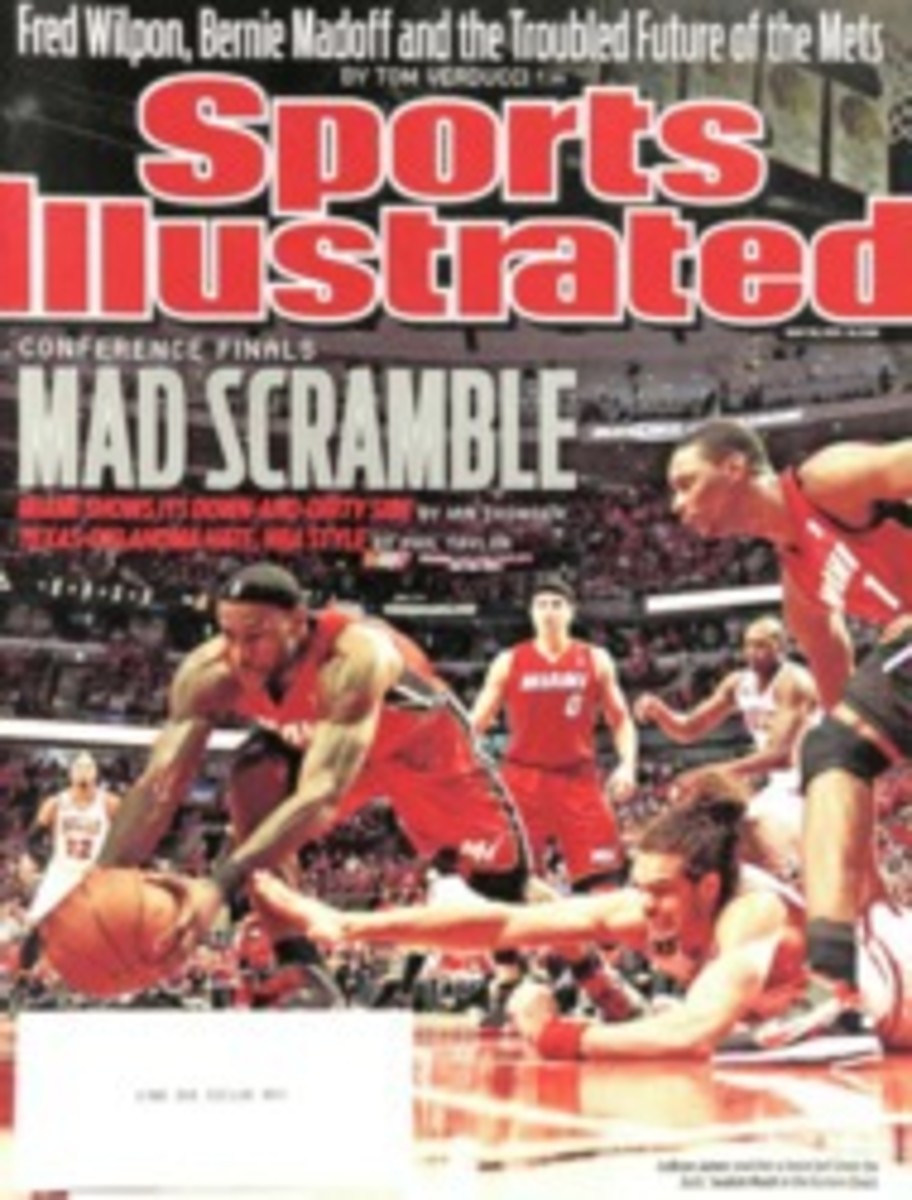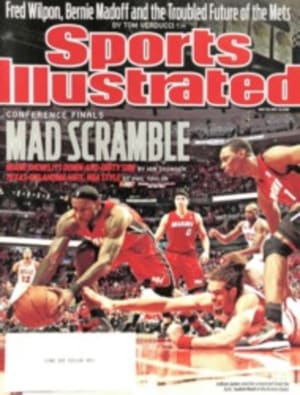
100 YEARS OF THE INDY 500
A spectacle of speed and danger born on the bricks in 1911 has evolved into a far safer and more streamlined event—now can the race regain its roar?
Were Carl Fisher, the founding president of the Indianapolis Motor Speedway, to return from his grave on May 29 for the 100th-anniversary edition of the 500-mile sweepstakes, how surprised would he be at what he saw?
Trick question. Born with a severe astigmatism, Fisher was legally blind; he couldn't see much of anything. This did not prevent him, however, from having a full, rich life (he was sued for breach of promise by 10 fiancées) or even from being a professional race car driver (though that hardly went smoothly, with Fisher taking his Mohawk into the stands at Zanesville, Ohio, in 1903 and killing a Civil War vet). Indeed, for his role in developing Miami Beach, as well as birthing the Indy 500, Fisher (1874--1939) has become known as a visionary. As such, then, he might be shocked to sense, if not exactly see through his pop-bottle lenses, that the race today has largely become an occasion for peering backward.
In some ways the Indy 500 appears as robust as ever, with some 300,000 spectators expected on Sunday for race day, the climax of a month of hoopla that keeps the Hoosier capital humming. No other single-day sporting event in the world is as well-attended. But when was the last time you heard two guys in a bar—even the venerable tiger-oak bar at the St. Elmo Steak House, where Fisher himself downed more than a few "Scotch highs"—arguing over who might get his or her face on the Borg-Warner Trophy? Who even knows who's in the race, apart from the dude who won Dancing with the Stars, Ashley Judd's husband and (maybe for the last time) Danica Patrick? The answer: a relatively few diehards whose cheers of "Go, Bruno Junqueira!" will be drowned out by the multitudes celebrating a past populated by larger-than-life heroes named Foyt, Unser, Rutherford and Andretti at the wheel of uniquely memorable machines, and by another fellow named Daddy, who would mow the grass on Memorial Day, then light a cigarette, sit down beside you on the patio and watch you listen to the race on the radio.
Nostalgia is nice, but as the novelist Peter De Vries once noted, not what it used to be. As long as fans keep focusing on sentiment over story line, TV ratings will keep sinking and the Greatest Spectacle in Racing will fade with each passing baby boomer. How did we get here? A century ago, when the 500 wasn't a hallowed tradition but rather Fisher's desperate attempt to salvage his faltering, two-year-old speedway, 80,000 showed up, and the race grew from there for reasons that no one quite fathomed. By mid-century it was, at least in large portions of the heartland, the most anticipated event on the calendar besides Christmas. "I don't know why Indy became such a phenomenon," Speedway president Joe Cloutier said in 1980, "but I know it's a fragile formula that we don't want to mess with."
And then Cloutier died on the job, and people messed with the formula, pushing back the start time, so that the race now unfolds in duller early-afternoon light, and revising the rules, in the wake of a mid-'90s clash with an upstart open-wheel league, which diluted the talent pool (a dentist raced in the 500) and ushered in an age of slower, less costly cars that look clunkier and sound wimpier, in the opinion of many fans who have long since gone over to NASCAR. The drift at Indy has generally been toward the sensible.
That may not be the way to go. Those charged with revitalizing the 500 should remember that Fisher's nickname was Crazy Carl. Originally he wanted to stage a 1,000-mile marathon and only relented when his fellow founders argued that the public might shun an event likely to last 14 hours. Even at half the distance it was still the longest race ever held on a track, except for a couple of 24-hour gimmicks. Barney Oldfield, the most daring driver of the day, called it "the simply too-long sweepstakes" and predicted disaster for his fellow "autoists," who had no windshields, seat belts, hard helmets or roll bars to protect them as they negotiated the bumpy bricks at an average speed of about 74 mph. In Circle City saloons, bookies took bets on who would win and how many would perish.
The first contest itself was chaotic. Fisher had installed a Rube Goldberg--esque system for tracking the 40-car field—it involved wires, telephones, marbles, adding machines and Dictaphones—but it was mostly for show, and as tires blew and cars pitted, the running order quickly became a muddle. At about 240 miles, a wreck nearly took out the judges' stand, causing officials to flee for their lives. For at least 10 minutes, no one was even trying to keep track of that first Indy. When the checkered flag finally fell, one man was dead, half a dozen were hospitalized and the winner's prize was in the trembling hands of Ray Harroun, driver of the Marmon Wasp, a car that happened to be made in Indianapolis by a buddy of Fisher's. Some were outraged, especially after Fisher ordered the scoring sheets destroyed so that no one could check the judges' decision—but the crowds came back, in increasing numbers, just to see what might happen next. Oh, how they'll roar at the race's centennial. But it's been a coon's age since Indy crackled with that Crazy Carl suspense.
Charles Leerhsen is the author of the just-published Blood and Smoke: A True Tale of Mystery, Mayhem, and the Birth of the Indy 500.
PHOTO
AP
O PIONEERS! The 40 cars and crews that braved the first 500 (right) led the way for 2010 winner Dario Franchitti (above).
PHOTO
FRED VUICH
[See caption above]

